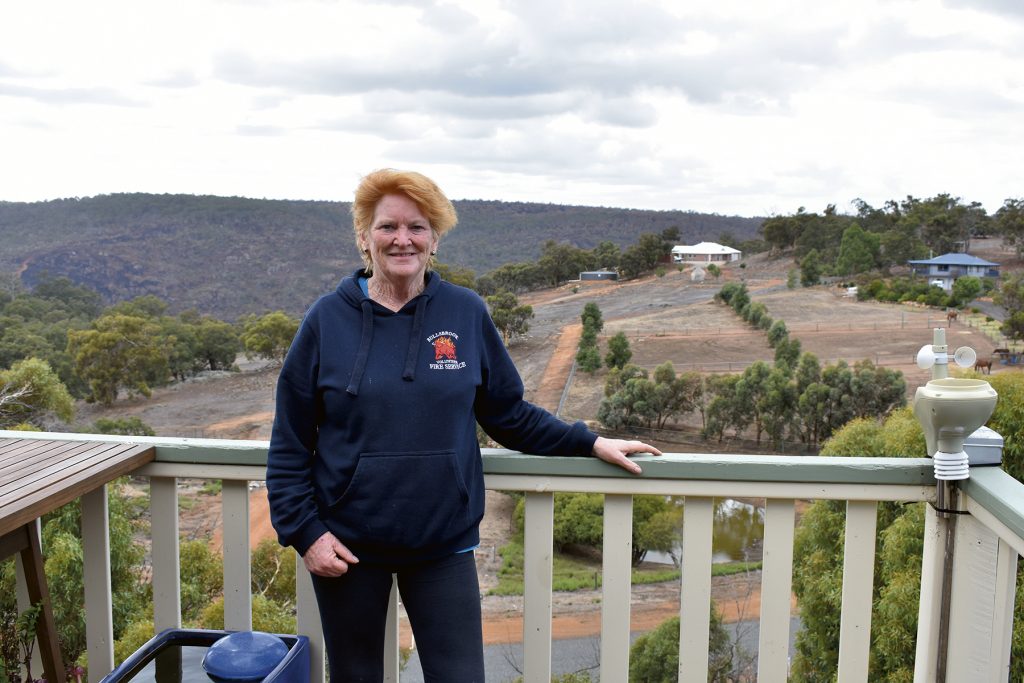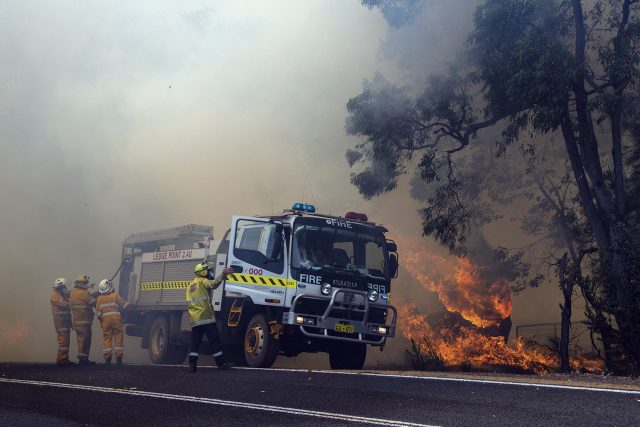Bushfire plan: stay and defend

For volunteer firefighter and seasoned Shady Hills resident Shirley Routley, the decision to stay and defend her property in the event of a bushfire is clear cut and well thought out.
A strong advocate for having a bushfire management plan, Shirley practises what she preaches by keeping her property bushfire safe year-round and having a clear course of action and the right equipment on hand to actively defend her home.
“You can almost guarantee that the power will get cut off,” said Shirley. “We didn’t this time, but usually that’s what happens. You have to have a generator that is going to power at least your pump, if that’s what you are relying on. And you have to have fire pumps – garden hose pipes in fires like these are not going to work. You need PPE, you have to know where the danger areas are on your property and know how you are going to defend them.”
Shirley’s plan also includes contingencies should she not be home to defend her property, or if physical and emotional resources become exhausted.
“If I’m at work and a fire breaks out, it’s at least an hour till I can get home. I have to plan that I might not even be able to get back to defend. The way I plan for that is to let the neighbours know how to turn the sprinklers on, open the gates for me – that’s when the community becomes so important. Sharing your bushfire plan with a trusted neighbour is a really good idea,” explains Shirley.
“There also may come a point after days of adrenalin and smoke where you get out there and you just think, ‘I can’t do this anymore’. Or, it gets too threatening and you need to go. If you can’t get out – what are you going to do?”
Bushfire preparedness is not something that applies only to large rural properties in fire-prone areas. Whether you are on a quarter acre or five acres, or in a built-up estate without a tree in sight, you must know what you will do in the event of a bushfire emergency.
Shirley says, “This fire went from Wooroloo to Shady Hills in hours. It was travelling so fast. If it gets out of this valley, then Bullsbrook town is potentially in danger. There’s enough fuel and when the fire is spotting so far ahead — that’s why DFES are so cautious. It went from Walyunga nearly into residential Ellenbrook in minutes.”
Living through a third major fire in a decade has not daunted Shirley and the residents of Shady Hills, who only seem to get more connected and certainly more prepared after each major event.
“I absolutely love living here,” says Shirley. “Our community is amazing – everyone knew what they were going to do before it happened, which is fantastic. If you are staying to defend, you don’t feel like you are absolutely on your own.”
Bushfire plan: evacuate early
Since moving to Shady Hills in 2014 Mirella and Selwyn Roche-Parker have known their course of action in the event of a bushfire emergency will be to leave, and leave early where possible.
Mirella explains, “We spoke to a firie not long after we moved in and he said, ‘If you are going to defend, you are going to need a significant amount of stamina. Have a run or two around your block – if you can run around a couple of times, get back and not be dead, you might have enough stamina.’ I don’t think people realise that! We also just don’t have the kind of PPE or equipment needed.
“Our fire plan is how do we leave safely? Otherwise, we are a nuisance to the firies; another two lives they have to defend. We know if the threat is imminent, we just walk out – keys and laptops and go. Whilst we love everything we own and we adore our home, everything else is just ‘things’.
Vigilance is key, with Mirella and Selwyn keeping up to date with official warnings as the Wooroloo emergency unfolded, conducting visual checks and carrying out further property preparation before leaving.
“We slept in shifts on the Tuesday night, checking alerts hourly and had the radio on all night,” said Mirella.
“When we looked outside it looked like someone had poured out a cauldron of molten lava – the sky was red and the air was greasy.”
With plenty of notice in this instance to evacuate, Mirella and Selwyn were able to further prepare their property before they left, which should form part of an evacuation plan, where possible.
“We had done everything we could to make the property defendable, and with the luxury of time we went around and did a whole stack of extra clearing — gas bottles were thrown away from the house, all that kind of stuff.”
In the event that not all living creatures can be safely evacuated from a property, allocations must be made so they can be safely fed and watered by neighbours if necessary, as it may be several days before evacuated residents are allowed to return.
“We can’t move our eleven alpacas,” explains Mirella. “The advice we received is that, given enough room, they will survive a fire. But we have to plan for them to be fed – we opened up the feed bin before we left and there were amazing people going round delivering feed!”
The level of preparation, the clarity of communication and support offered between the Shady Hills residents during these emergencies is commendable.
“No one here is romantic about fire – I don’t see many people with a hero complex,” said Mirella. “There’s no judgement or recrimination – if you go, people understand that’s your plan, if you stay, they understand.
“My advice to new residents would be to link in with the community and get in touch with the Bullsbrook VFES and plan, plan, plan, plan! Get the firies to visit your property and tell you what is defendable and what’s not, what should be done and shouldn’t be done – that will relax anyone.
“Follow their advice, get to know your neighbours, heed all of the warnings and make your decisions.”









